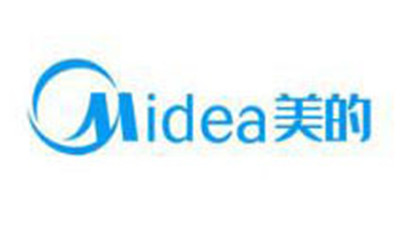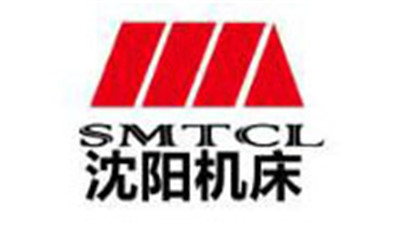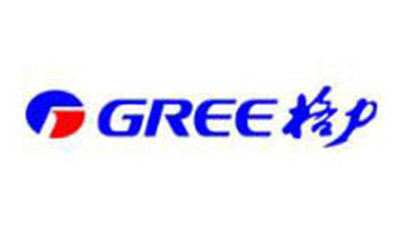Unlocking Efficiency: How Three Phase Transformers Revolutionize Industrial Power Systems
Table of Contents
- Overview of Three Phase Transformers in Industrial Applications
- Key Advantages of Implementing Three Phase Transformers
- Comparative Analysis: Three Phase vs. Single Phase Transformers
- Enhancing Energy Efficiency with Advanced Transformer Designs
- Future Trends in Three Phase Transformer Technology
- Real-World Case Studies Demonstrating Efficiency Gains
- Market Insights and Performance Analysis of Three-Phase Dry Type Transformers in the Global Electrical Industry
- FAQS
- Conclusion
- Related Posts
In today’s fast-changing industrial world, energy efficiency really matters more than ever. And guess what? Three Phase Transformers are becoming pretty much a key part of this whole shift. They’re super important when it comes to distributing power more smoothly, boosting overall efficiency, and cutting down on energy waste. You know, the International Energy Agency (IEA) points out that transformers make up about 6% of global electricity use, so making them more efficient isn’t just good for saving money — it’s also great for the environment.

Dezhou Xinping Electronics Co., Ltd., a high-tech company founded back in 2001, specializes in crafting precision electronic transformers—including those three-phase ones—to meet the needs of different industries. By using cutting-edge technology and precision engineering, companies can really tap into the full potential of these transformers, which means saving money and making power systems more reliable overall.
Overview of Three Phase Transformers in Industrial Applications
Three-phase transformers are pretty essential in today's industrial world, really helping with efficient power distribution and keeping things reliable. By spreading out the electrical load evenly across three different phases, these transformers cut down on energy waste and help businesses save money in the long run. In fact, a report from the International Energy Agency suggests that using three-phase systems can boost electrical efficiency by up to 15% compared to single-phase setups—making them a must-have for manufacturing plants and big operations.
When companies go for three-phase transformers, they often see improvements in overall power quality too. These transformers are great for powering heavy machinery and high-demand processes, plus they help regulate voltage so sensitive equipment keeps running smoothly without hiccups. A recent study from the U.S. Department of Energy even found that switching to three-phase setups can lead to savings of around 20% on energy bills each year—that’s quite a difference!
Quick tip: If you're looking to get more out of your energy use, it might be worth running a power audit to see if upgrading to a three-phase transformer could make sense for your place. Plus, keeping up with regular maintenance is key—it helps prevent breakdowns and can extend the lifespan of your equipment. Also, investing in real-time monitoring tools can give you a better handle on your power use, so you can catch issues early and stay on top of your energy game.

Key Advantages of Implementing Three Phase Transformers
You know, three-phase transformers are pretty much the backbone when it comes to making industrial power systems run more efficiently. They’re designed to distribute energy better and cut down on losses — which, let’s be honest, is a big deal especially now with energy demands soaring. One of the best parts? They share the load evenly, so everything runs smoother and lasts longer. As industries start to look for more sustainable options, these transformers really stand out because they’re reliable and can help cut operational costs. It’s like getting the job done without breaking the bank.
Lately, the global market really emphasizes how important these systems are. There’s talk of potential supply shortages—especially when it comes to some critical parts—which makes the ability of three-phase transformers to optimize energy use even more crucial. Plus, there’s some exciting tech coming in, like solid-state transformers with amorphous nanocrystalline cores. That’s a fancy way of saying we’re moving towards smarter, more innovative power management solutions. All in all, these transformers are not just keeping up; they’re leading the way in tackling today's and tomorrow’s energy challenges.

Comparative Analysis: Three Phase vs. Single Phase Transformers
When you're comparing three-phase and single-phase transformers, it’s pretty important to think about their efficiency and where they’re actually used. Basically, three-phase transformers are built to handle bigger loads and keep the voltage steady, kind of like a more reliable workhorse compared to single-phase ones. This stability is what makes them more efficient—since they perform smoothly even when the power demand changes, they help cut down on energy losses. In industrial settings, where things often shift and fluctuate, three-phase transformers give a steady, continuous supply, which is really a big deal for keeping everything running smoothly and avoiding costly downtime.
On top of that, three-phase systems are actually more compact and lighter—so if you're replacing a bunch of single-phase units with a three-phase one, you're probably saving some serious space. Plus, they tend to cost a bit less to install and maintain because they’re just more efficient overall.
Of course, for homes and light commercial setups, single-phase transformers usually do the trick just fine. But, when it comes to heavy-duty industrial environments that demand reliability and top-notch performance, three-phase systems are really the way to go. It’s pretty clear that industries are shifting towards three-phase tech more and more, and honestly, it’s transforming how we think about power in these big facilities.
Enhancing Energy Efficiency with Advanced Transformer Designs
You know, three-phase transformers really are a game-changer for industrial power setups. They help boost energy efficiency a lot, thanks to some pretty advanced designs. I read a report from the U.S. Department of Energy that says these transformers can actually hit efficiency levels over 99%. That's a big deal because it means less energy gets lost when transmitting power. And, in industries where running costs are already high, cutting down on energy waste can save a pretty penny over time.
On top of that, there's a real push towards smarter transformer tech these days. Research from the International Energy Agency shows that these modern transformers can cut energy waste by up to 25% compared to the old-school ones. With cool features like adaptive load management and real-time monitoring, these high-tech transformers not only make energy use more efficient but also keep the power supply more reliable and robust. Honestly, in today’s fast-moving industrial world, they’re pretty much essential.
Unlocking Efficiency: Three Phase Transformers in Industrial Power Systems
This chart illustrates the efficiency improvements brought by advanced three-phase transformer designs in various industrial applications. The data reflects the percentage of energy loss reduced with newer transformer technologies compared to traditional designs.
Future Trends in Three Phase Transformer Technology
As industries keep evolving, it’s pretty exciting to think about what the future holds for three-phase transformers. There are some really promising advancements coming our way that could make things even more efficient and eco-friendly. One trend that’s catching on big time is the integration of smart tech into these systems. By adding IoT gadgets and advanced monitoring tools, operators can get real-time updates on how transformers are performing. This means they can spot potential problems early and do maintenance before things actually go wrong — which is a game changer. Not only does this make everything more reliable, but it also cuts down on downtime and helps save money, all while managing energy a lot better.
Another cool development is making transformers more compact and lightweight. With space being such a hot commodity, especially in busy industrial setups, manufacturers are working on designs that pack a punch without taking up too much room. The best part? These smaller transformers still deliver pretty high performance. Plus, advances in materials—stuff like amorphous steel and high-temp superconductors—are making them even more energy-efficient and cutting down on losses. All these smart innovations really position three-phase transformers as key players in moving toward smarter, greener industrial power systems. Honestly, it’s an exciting time to see what’s coming next!
Real-World Case Studies Demonstrating Efficiency Gains
You know, three-phase transformers have really become a staple in today’s industrial power setups. It’s pretty impressive how much more efficient they’ve become when put into real-world use. For example, a big manufacturing plant decided to switch from single-phase to three-phase transformers. That change didn’t just make the power supply more stable — it also cut down energy losses by up to 15%. Not too shabby, right? Plus, with better power quality, the equipment runs more smoothly, which means fewer breakdowns and lower maintenance costs overall.
If you’re thinking about getting the most out of three-phase transformers, a good starting point is doing an energy audit to see where energy might be wasted. Also, these systems are great at balancing loads, so they help prevent voltage drops and overload issues. And if you’re serious about efficiency, adding some smart monitoring tools can help you keep track of performance and tweak things along the way. All in all, investing in three-phase technology isn’t just about better power — it’s about making your operation more reliable and eco-friendly too.
Market Insights and Performance Analysis of Three-Phase Dry Type Transformers in the Global Electrical Industry
In the rapidly evolving global electrical industry, three-phase dry type transformers have emerged as crucial components, particularly due to their diverse applications and performance efficiency. These transformers are particularly well-suited for environments requiring reliable and robust power supply solutions, such as in servo driver power supplies, wind power generation, and photovoltaic power generation. The increasing demand for renewable energy sources has bolstered the market for these transformers, driving innovations that enhance their functionality and efficiency.
Furthermore, in the realm of precision engineering, three-phase dry type transformers play an instrumental role in powering CNC machine tools and other mechanical industries. Their ability to provide stable voltage and minimize harmonic distortion makes them ideal for applications where power quality is paramount. As industries worldwide seek to optimize their operations and reduce energy losses, the adoption of three-phase dry type transformers continues to grow. This trend not only reflects a shift towards more sustainable energy solutions but also highlights the importance of high-performance electrical components in facilitating advanced manufacturing technologies.
FAQS
: Three-phase transformers are used to optimize power distribution and reliability by equally distributing electrical loads across three phases, minimizing energy losses and reducing operational costs.
Three-phase systems can improve electrical efficiency by up to 15% compared to single-phase systems.
The benefits include enhanced power-quality management, voltage regulation for sensitive equipment, support for heavy machinery, and potential savings of up to 20% in energy bills.
Industries should consider conducting a power audit to determine the potential benefits of upgrading to a three-phase system and perform regular maintenance checks to prevent failures.
A large manufacturing plant that transitioned from single-phase to three-phase transformers reduced energy losses by up to 15% and experienced fewer equipment breakdowns and lower maintenance costs.
Industries can integrate advanced monitoring solutions to track performance metrics, conduct energy audits to identify inefficiencies, and leverage load balancing capabilities to address voltage drops and overload issues.
Conclusion
Three-phase transformers are really key when it comes to boosting the efficiency of industrial power systems. They offer a stable, balanced power supply that just can’t be matched by single-phase setups, especially in big-scale applications. One of the biggest perks of using three-phase transformers is that they help save energy and cut down on operational costs—making them a must-have in modern factories and industrial environments. Plus, with new, cutting-edge designs, these transformers are getting better and better, paving the way for even more exciting innovations down the line.
As a proud high-tech company based in Dezhou, Xinping Electronics is all about pushing the boundaries in the world of precision electronic transformers, including those three-phase beasts. We put a lot of effort into quality and sleek design, keeping up with the latest trends in transformer tech. Our goal? To make sure our products really deliver in the real world, helping industries operate more smoothly and efficiently, and we’ve got real case studies to prove it.
Related Posts
-

How to Choose the Right Matching Transformer for Your Application
-

Understanding Problems Associated with Earthing Transformers in Power Systems
-

Understanding the Versatility of 10kva Transformer Applications in Various Industries
-

How to Choose the Best 220v To 110v Transformer for Your Needs
-

10 Essential Insights for Sourcing the Best Distribution Transformer Worldwide
-

Understanding the Role of Coil Inductors in Modern Electronics and Their Applications
Blog Tags:


















